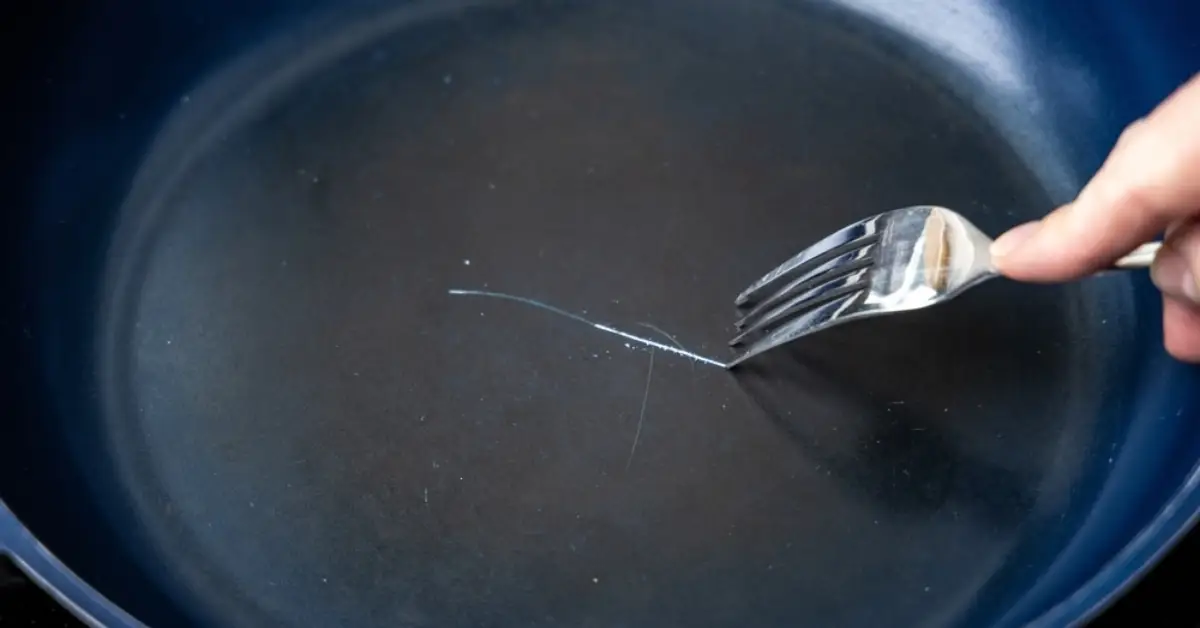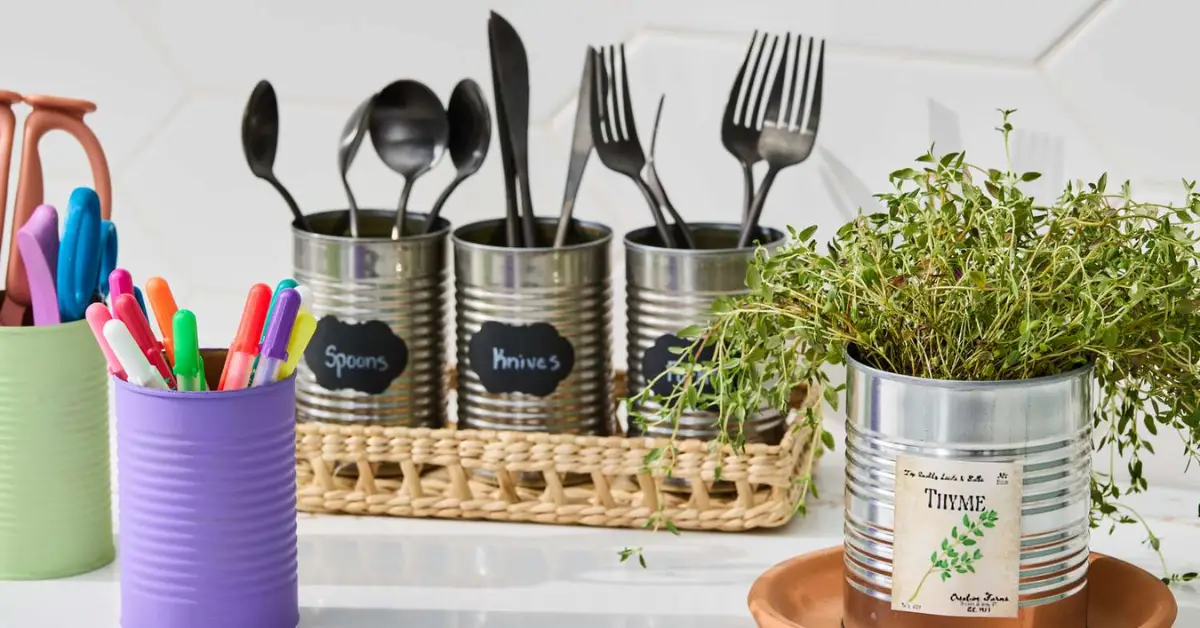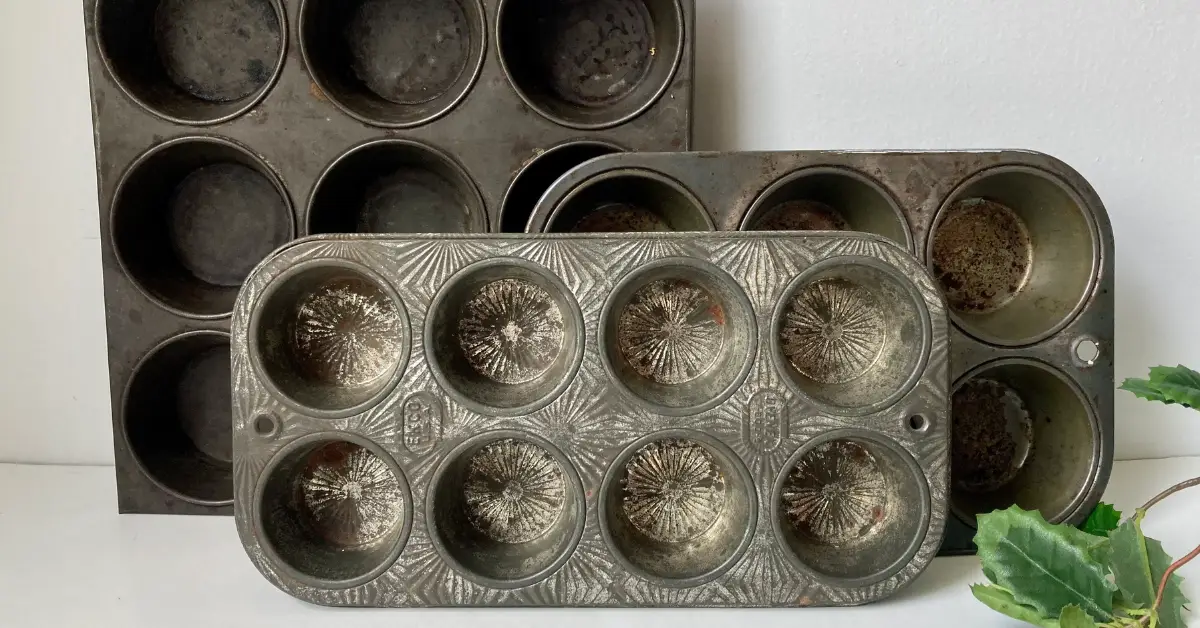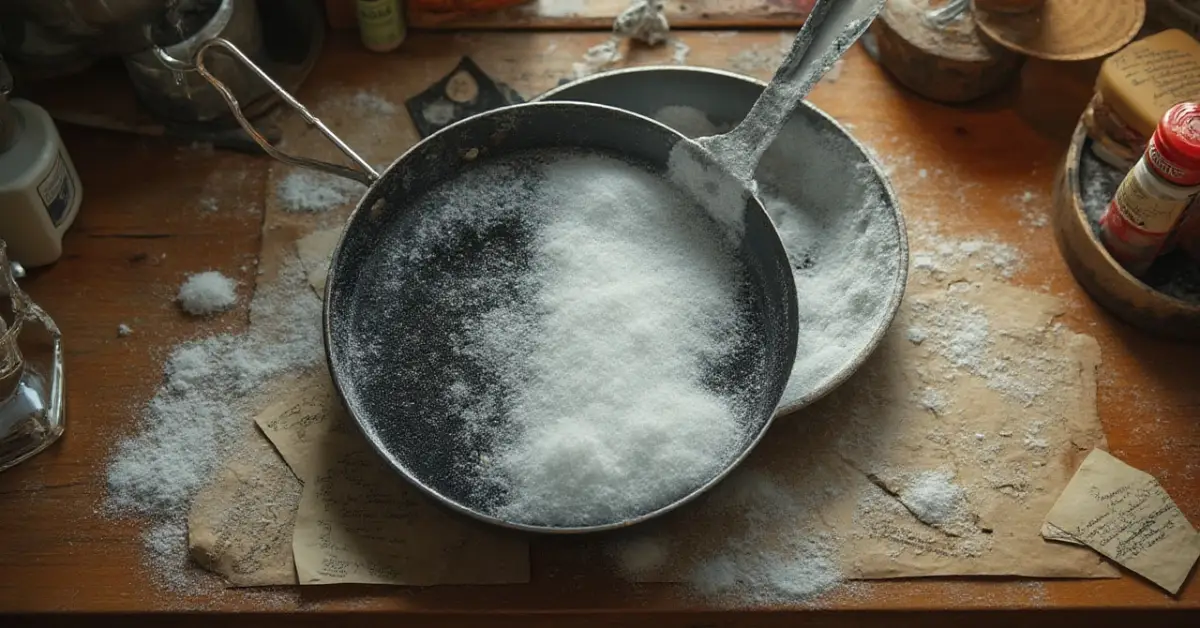10 Kitchen Items You’ll Regret Throwing Away — Reuse Hacks
I’m going to be blunt: tossing old kitchen tools into the trash is the easy choice — but it’s also unnecessary. I’ve been rescuing, repurposing, and testing household gear for years, and I can reliably tell you that many things you think are “done” still have plenty of use left — around the house, in the garden, or even as clever gifts.
You probably search “how to reuse old kitchen tools” because you want practical options, not crafty fluff. You want quick wins that save money, cut clutter, and actually work in a real home. I’ll show you specific tools, simple step-by-step reuse ideas, and the safety line between smart reuse and items that should really be recycled or tossed.
Quick reality check: food and kitchen waste is huge, and small choices add up. Reusing a few utensils or pans might not solve climate change, but it will cut what you spend replacing items and reduce the junk headed to the landfill — and that’s worth doing.
Before we jump into the list, here’s what I looked for: I studied top guides, DIY threads, and expert posts to spot patterns and gaps — most articles give decorative ideas, few show functional, everyday reuses for actual kitchen tools, and almost none explain when not to reuse. That’s what this piece fixes: useful ideas you can use today, plus the honest safety checks you need.
Is it time to toss or time to reuse?
Here’s the truth — not everything deserves a second life. Some tools are better off recycled than risked in your kitchen or garden. I’ve learned this the hard way after trying to “save” a few pans that should’ve retired years ago. Before you decide to reuse anything, do a quick check using three simple questions:
- Is it safe? If the item is chipped, cracked, or has parts that can flake into food, it’s a no-go. Old non-stick pans with peeling coatings or rusted blades are best recycled or upcycled outside the kitchen.
- Is it cleanable? Some materials hold on to bacteria, grease, or odors. Wooden spoons with deep cracks or porous plastic cutting boards that smell even after washing — they’ve done their job.
- Is it fixable? Sometimes all a tool needs is a little care — tightening a screw, sanding a handle, or replacing a part. If the fix costs less than half the price of a new one, I’d say it’s worth doing.
You don’t need to guess. The U.S. Environmental Protection Agency (EPA) offers clear guidance on reusing and recycling household materials safely — it’s a good habit to check before you repurpose anything that touches food.
Safety, hygiene, and material concerns

Let’s talk about what really matters — what’s safe to reuse and what’s not.
Here’s a quick cheat sheet from years of trial and error:
- Non-stick cookware: If the surface is scratched or peeling, skip reusing it for food. You can still turn it into a drip tray, plant base, or wall décor, but keep it far from heat or ingredients.
- Plastic tools: Once they melt, discolor, or warp, they can leach chemicals. Don’t risk it. Use them for crafts, storage, or labeling instead.
- Metal tools with rust: Surface rust can be cleaned, but if it’s pitted or flaking, recycle it. Rust weakens metal and can contaminate food.
- Wooden spoons or boards: When they’re split or absorb smells, it’s time to retire them. You can sand and seal them for decorative or gardening use, but not for cooking again.
The goal here isn’t perfection — it’s awareness. Once you start checking your tools through this lens, you’ll spot the difference between “still good” and “should go” instantly.
When reuse is smart — cost, material quality, sentimental value
Some kitchen tools deserve a second life not because they’re perfect, but because they still work. Think of this as the “hidden potential” test:
- Solid materials: Stainless steel, glass, and cast iron are built to outlast trends. A scuffed whisk or bent ladle can easily become part of a new project.
- High replacement cost: If something would cost a lot to replace, consider whether a quick repair or creative repurpose could stretch its life.
- Emotional or vintage value: That old coffee pot from your grandmother? Even if it’s not brewing anymore, turning it into a planter or vase keeps the memory alive — and your space more personal.
When you weigh safety, effort, and sentimental worth, you’ll know exactly what to keep and what to let go.
So before you toss that tool, give it a fair inspection — chances are, it still has one more job left in it.
The 10 kitchen tools you shouldn’t throw out — and how to reuse them
1. Old Whisks
What makes this tool a reuse candidate: Whisks often lose their shape or stiffness after years of mixing, and once they can’t whip cream properly, most people toss them. But that wire frame makes them perfect for creative reuse — they’re sturdy, lightweight, and easy to clean.
Smart reuse ideas
- Hang them upside down as mini flower vases or light bulb covers for a rustic kitchen vibe.
- Use them in the garden as plant supports for small stems or herbs.
- Turn them into a Christmas ornament holder — slide the loop through the whisk wires.
Bonus tip or twist: Old whisks also make great air-drying stands for paintbrushes or makeup brushes — the open wire design allows airflow so items dry faster.
2. Worn-out Skillets or Pans
What makes this tool a reuse candidate: When non-stick coating starts to peel or the surface discolors, the pan becomes risky for food. But it’s still a strong piece of metal — meaning it has plenty of second-life potential.
Smart reuse ideas
- Use it as a drip tray under houseplants to catch water overflow.
- Convert it into a DIY serving board or candle base by sanding the surface and coating it with a food-safe sealant.
- Mount several pans on a wall to create an industrial-style kitchen art display.
Bonus tip or twist: If it’s cast iron, strip the old seasoning and re-season it instead of tossing — most cast iron pans can be restored even after years of neglect.
3. Wooden Spoons or Spatulas with Worn Handles
What makes this tool a reuse candidate: Wooden utensils crack, darken, or absorb odors over time. Once they’re too rough for cooking, they still have a warm, natural texture ideal for crafts or decor.
Smart reuse ideas
- Paint and label them as garden markers for herbs and veggies.
- Use them as drawer dividers or wall hooks by cutting and gluing them strategically.
- Create a rustic photo frame border using the handles.
Bonus tip or twist: Lightly sand and oil them to bring back their original glow — even as decorative accents, a restored finish looks beautiful.
4. Baking Sheets or Muffin Tins
What makes this tool a reuse candidate: These tend to warp or darken after heavy use, but their metal body is still sturdy and heat-resistant.
Smart reuse ideas
- Turn muffin tins into junk-drawer organizers for screws, buttons, or jewelry.
- Use old baking sheets as magnetic boards — spray paint them, add magnets, and mount on a wall.
- Turn them into seed-starting trays for your garden.
Bonus tip or twist: If you have kids, muffin tins make great snack samplers — fill each cup with a different treat for movie nights.
5. Metal Ladles or Strainers

What makes this tool a reuse candidate: Bent handles or tiny rust spots might make them awkward for cooking, but their bowl shape makes them great for creative storage or decor.
Smart reuse ideas
- Repurpose ladles as candle holders or small planters.
- Use strainers as hanging light shades for a farmhouse look.
- Mount a row of old ladles on a board as unique wall hooks.
Bonus tip or twist: Spray paint them in matte black or copper to give them a modern, uniform finish that looks intentional.
6. Cutting Boards
What makes this tool a reuse candidate: Scratched or scarred boards can harbor bacteria, but they’re usually solid pieces of wood or plastic that are too valuable to just toss.
Smart reuse ideas
- Sand and seal old wooden boards to create serving trays or cheese boards.
- Use them as tablet or recipe book stands by adding a backrest.
- Paint one side with chalkboard paint to create a kitchen message board.
Bonus tip or twist: Combine several smaller cutting boards to make a DIY backsplash — it looks rustic and saves on tiles.
7. Old Kettles, Coffee Pots or Teapots
What makes this tool a reuse candidate: These often stop working or lose their shine, but their shape makes them timeless decor pieces.
Smart reuse ideas
- Use as planters for succulents or herbs.
- Turn them into watering cans by drilling small holes in the lid.
- Convert them into table-centerpiece vases.
Bonus tip or twist: Keep the lid slightly open and place a tea-light inside for a cozy, glowing lantern effect.
8. Glass or Metal Mixing Bowls
What makes this tool a reuse candidate: A scratched bowl might not be great for baking, but it’s durable and easy to clean — a great candidate for repurposing.
Smart reuse ideas
- Use as pet food bowls or countertop fruit holders.
- Turn into floating candle bowls for your dining table.
- Use small ones to organize office or craft supplies.
Bonus tip or twist: Stack mismatched glass bowls for a tiered dessert or serving display at parties.
9. Utensils with Missing Parts
What makes this tool a reuse candidate: A fork with a bent prong or a ladle with a missing handle doesn’t sound useful — until you realize how easy it is to turn them into art or small tools.
Smart reuse ideas
- Bend forks and spoons into key hooks or jewelry hangers.
- Use old handles as cabinet pulls in a rustic kitchen.
- Turn broken spatula heads into paint or cleaning scrapers.
Bonus tip or twist: Bundle several old utensils, wrap with twine, and mount as a statement kitchen wall piece — a creative conversation starter.
10. Pot Lids or Baking Trays That Are Mismatched
What makes this tool a reuse candidate: We all end up with spare lids or trays that no longer match their originals. Their glass or metal surfaces still offer value in storage or decor.
Smart reuse ideas
- Use glass lids as photo frames or clock faces.
- Repurpose metal lids as serving trays or coasters.
- Mount baking trays as magnetic memo boards in the kitchen or garage.
Bonus tip or twist: Combine a few different lid sizes to create a layered wall art piece — looks modern, costs nothing.
If you want more design-level inspiration, check out Tasting Table’s creative upcycling guide — it’s full of visual examples that can help you see how everyday tools can be reinvented with style.
Every one of these ideas proves the same point — you don’t need to buy new to refresh your space. You just need to look at what’s already in your kitchen a little differently.
Smart Reuse Ideas Categorized by Home Zone

Kitchen Storage & Organization
If you’re anything like me, your kitchen drawers have a mix of old tools and too many gadgets. The good news — you can use those same forgotten pieces to organize the chaos. Here’s how:
- Old muffin tins make perfect drawer organizers for small items — batteries, rubber bands, or seasoning packets.
- Metal strainers and ladles can double as hanging baskets for garlic, onions, or spice jars.
- Old cutting boards can act as dividers in drawers or shelves; slide them between pans or trays to prevent scratching.
- Whisks and slotted spoons can hold utensils upright if you glue the handles onto a board or place them in jars for a rustic look.
And while you’re organizing your space, don’t forget your pantry — small storage mistakes can invite unwanted guests. Learn more in 7 mistakes that attract pantry moths (and how to fix them fast).
These small tweaks don’t just save space — they save money. You’ll find yourself reaching for items faster and spending less time digging through clutter. Once you start reusing old tools for storage, you’ll see your kitchen in a completely new way.
Garden, Patio & Outdoor Uses
Outdoor areas are perfect for breathing new life into old kitchenware. You’d be surprised at how well some of these pieces fit in your garden:
- Teapots and coffee pots make great planters for herbs or succulents — their spouts allow natural drainage.
- Baking trays and metal bowls can be used as shallow birdbaths or drip catchers for potted plants.
- Whisks and old ladles can become clever garden stakes or mini lantern holders — they’re weatherproof and easy to hang.
- Wooden spoons can be painted and used as plant markers — they add charm and personality to your garden beds.
If you love outdoor upcycling, you’ll enjoy 10 genius ways to repurpose laundry detergent caps — it’s packed with creative garden and patio reuse ideas that pair perfectly with your kitchen projects.
These outdoor reuses bring your garden to life while keeping metal and plastic out of the landfill. Each repurposed piece becomes a conversation starter — proof that sustainability can look good too.
Gift-Giving, Craft & Décor Reuse
Not everything you reuse has to stay at home. Some of the most heartfelt gifts come from turning old items into something creative and personal.
- Old baking pans or ladles can be transformed into candle molds — fill them with wax and essential oils for homemade gifts.
- Wooden spoons or spatulas can be hand-painted with messages or patterns and tied together as personalized kitchen décor.
- Glass mixing bowls can be layered with baking ingredients to make “recipe-in-a-jar” style gifts.
- Forks or spatulas can be bent into photo or recipe card holders — simple, meaningful, and unique.
When you reuse something thoughtfully, you’re not just cutting waste — you’re giving it a story. That’s what makes handmade gifts so powerful. They carry effort, creativity, and heart.
So whether you’re organizing your kitchen, decorating your patio, or crafting gifts, every old tool has a second act waiting. You just need to look beyond what it was and imagine what it could be.
How much can you save — and how you help the planet
Let’s talk about two things: your wallet and the wider world. When you reuse old kitchen tools, you’re not just being handy—you’re making a measurable impact.
Your savings
Imagine you reuse just 5 kitchen items this year (old whisk, skillet, wooden spoon, baking sheet, and a cutting board). If each would’ve cost you around $20 to replace, that’s $100 saved. Now, scale that across a typical 4-person household that upgrades kitchen gear every 3-4 years—you’re easily looking at $200-$300 a year in avoided spending from reuse alone.
Environmental benefit
Here’s a strong fact: According to the U.S. Food and Drug Administration (FDA), in the U.S., food is estimated to be wasted at 30–40 percent of the food supply, which corresponded in one estimate to approximately 133 billion pounds and $161 billion worth of food at the retail and consumer levels.
While that statistic is about food waste, the bigger principle applies: material items we throw away prematurely add to landfill mass, require new raw materials, and boost carbon footprint. Every tool you reuse avoids that chain.
By repurposing kitchen tools, you reduce demand for new production (metal, plastic, wood), cut extraction and manufacturing energy, and help keep usable items out of the landfill.
Why this matters for you
- You get immediate financial benefit (save money) and long-term value (get more life from what you already own).
- You become part of the sustainability solution, not just a consumer.
- Your home becomes more intentional—you’re not just discarding, you’re upcycling.
- It gives you neat conversation points (share your reuse wins) which makes your space feel more personal and less disposable.
Quick checklist for tracking savings & impact
- List 3 tools you plan to reuse this month and estimate their replacement cost.
- Note one environmental benefit (e.g., “no new plastic produced”, “less metal extraction”).
- After 3 months, review: did you avoid buying replacements? Did the reused items hold up?
Use this as a mini-project in your home. You’ll see the payoff—not just financially, but in how your household thinks about what’s “junk” and what’s “resource”.
In short: reuse isn’t just about doing the right thing—it’s about doing something smart. Let’s make that decision conscious, intentional, and beneficial.
Bonus Tips — Making Reuse Easy and Safe
Tips for Prepping and Repurposing Safely

Before you jump into your next reuse project, take a few minutes to prep your old tools properly. It makes all the difference — not just in how they look, but how long they last.
Here’s what I always recommend:
- Deep-clean everything first. Remove any leftover grease, food residue, or rust. A mix of vinegar and baking soda works wonders on metal or glass. If your kitchen still smells musty even after a deep clean, check out these 5 bin freshening tricks every home needs for quick odor fixes that keep your space smelling fresh and clean.
- Remove old coatings. If a non-stick pan is flaking, sand or strip off the damaged layer before reusing it for décor or storage.
- Smooth rough edges. For wooden or metal tools, lightly sand any sharp or splintered surfaces to make them safe for indoor or outdoor use.
- Add protection. Apply a coat of clear, food-safe sealant (for items that may hold food) or waterproof paint (for garden projects).
- Drill drainage holes. If you’re turning old teapots, bowls, or trays into planters, make sure to drill small holes for water flow to prevent root rot.
- Avoid unsafe materials. Never reuse cracked glass, chipped ceramic, or rusted cookware for food — they can harbor bacteria or release harmful particles.
These small steps turn reuse from “just another DIY” into something that lasts. You’ll end up with cleaner, safer, and better-looking projects that you’ll actually want to show off.
Where to Donate or Recycle Instead
Sometimes, reuse just isn’t possible — and that’s okay. What matters is what you do next. If a tool can’t be safely repurposed, here’s how to give it a responsible send-off:
- Donation centers: Local thrift stores like Goodwill or Habitat for Humanity ReStores often accept gently used kitchenware. Just make sure items are clean and functional.
- Scrap metal recyclers: Old stainless-steel tools, pots, and pans can be dropped off at most recycling centers. Call ahead — some even pay by weight.
- Community swaps: Many U.S. cities now have Buy Nothing groups on Facebook where you can give away items locally instead of tossing them.
- Municipal recycling programs: Check your local city website for kitchen utensil recycling or metal disposal programs — guidelines vary by state.
- Upcycling hubs: Some creative reuse centers (like Scrap Creative Reuse in Portland or The Waste Shed in Chicago) accept materials for art and education projects.
If it’s still functional, donate it. If not, recycle it responsibly — because even small efforts help reduce landfill waste.
Want more smart, sustainable living ideas? Visit Build Like New for practical reuse hacks, eco-friendly home upgrades, and creative inspiration to help you live cleaner, save more, and waste less.
What’s your favorite kitchen reuse hack? Share your thoughts in the comments — I’d love to feature reader ideas in our next guide!
Disclaimer: The information in this article is for general educational purposes only. Always clean, sanitize, and inspect reused kitchen items to ensure they’re safe and suitable for your intended purpose. Build Like New is not responsible for any damage or injury resulting from improper reuse or handling of materials.


